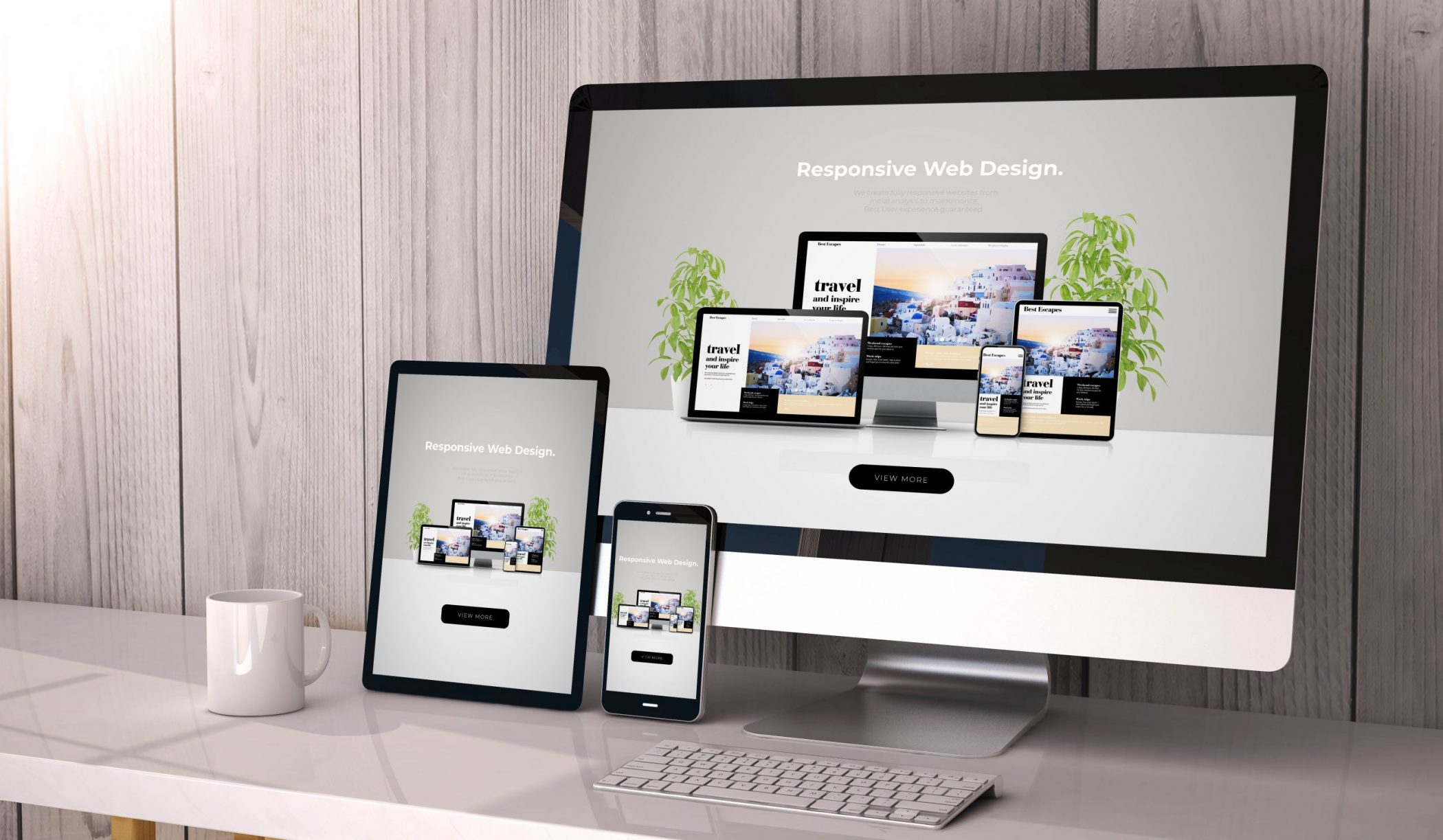Exactly How to Successfully Incorporate Appearances and Functionality in Internet Design
When developing a web site, you require to strike a balance between appearances and capability. It's not practically looking great; your design must additionally offer a purpose and overview users effectively. By concentrating on simpleness and intuitive navigating, you can produce an appealing experience. But what elements genuinely boost use while keeping aesthetic charm? Let's explore the crucial principles that can bring about a harmonious mix of charm and function.
Recognizing the Value of Looks and Performance
When you design a site, comprehending the equilibrium between aesthetics and performance is important for developing an efficient individual experience. An aesthetically attractive site grabs attention, yet it's the capability that keeps users involved. Visitors will promptly shed interest and leave.Consider your target audience and what draws them in if your website looks wonderful yet is difficult to navigate. You desire to create a layout that shows your brand name while ensuring ease of use. Structured designs, instinctive navigation, and clear calls to activity can boost both aesthetic appeals and performance.

Concepts of Effective Internet Design
To develop an effective website design, you need to abide by a number of essential concepts that enhance both customer experience and visual appeal. Focus on simplicity; a tidy design aids customers browse easily. Use a consistent color design and typography to keep coherence throughout your website. This cultivates familiarity and trust.Next, assure your style is receptive. Customers gain access to websites on different devices, so your layout should adapt seamlessly. Take note of visual power structure; highlight essential components with size, color, or positioning to lead users' focus.Finally, incorporate adequate white room. It avoids mess and makes content much more absorbable. Bear in mind, effective website design equilibriums looks and capability, so every layout selection ought to serve a function. By complying with these concepts, you'll produce a site that's not only visually appealing but likewise easy to use, eventually keeping visitors engaged and urging them to return.
Prioritizing Individual Experience
When focusing on user experience, you'll intend to start by understanding what your users really require. Simplifying navigation design can make a substantial difference in how quickly they locate what they're looking for. Additionally, boosting aesthetic pecking order assists assist their interest to the most important elements on your website.
Comprehending Individual Needs
Comprehending user needs is necessary for developing an engaging web experience that keeps visitors returning. To accomplish this, you need to determine the objectives and preferences of your target market. Begin by conducting customer research, like meetings or studies, to collect insights on what individuals value most. When interacting with similar internet sites, pay attention to their discomfort points and difficulties. This details allows you to customize your design, ensuring capability aligns with individual assumptions. Additionally, think about creating customer personalities that stand for various segments of your audience, aiding you picture their needs during the style procedure. When you focus on understanding customer requirements, you produce a website that not only looks great but likewise supplies a seamless, pleasurable experience that promotes loyalty.
Streamlining Navigating Layout

Enhancing Aesthetic Power Structure
A solid aesthetic pecking order is necessary in assisting individuals through your web site and guaranteeing they involve with essential content. To achieve this, utilize dimension, color, and spacing purposefully. Make essential components like headings larger and bolder than body text, drawing attention right away. Use contrasting shades to highlight contact us to action, motivating clicks. Furthermore, employ enough white room to separate sections, making material digestible and inviting.Consider the circulation of information; prepare aspects logically, leading users' eyes from one indicate the following. Usage visual hints, like arrowheads or lines, to route interest. By prioritizing visual power structure, you boost individual experience and enhance the chance of conversions, ensuring your web site is both visually pleasing and functionally effective.
Shade Theory and Its Effect On Use
While picking the appropriate colors for your site might appear like a minor detail, it considerably influences functionality and user experience. Color impacts exactly how customers view info and can enhance or impede navigation. For example, contrasting shades can help important aspects stick out, making it less complicated for visitors to find what they need.Additionally, think about the psychology of shades: blue often inspires depend on, while red produces urgency. Knowing your target market can lead your color selections, ensuring they reverberate well.Moreover, consistent color pattern help build brand identification, making your website more unforgettable. However, beware-- too many colors can bewilder individuals. Adhere to a minimal scheme that matches your web content and preserves clarity.Incorporating access is also vital; validate your shade mixes are pleasant for those with visual impairments. By attentively using color theory, you'll enhance use and develop an extra appealing customer experience.
Typography: Harmonizing Style and Readability
Color options set the stage for your site, however typography plays an equally essential role in enhancing customer experience. You desire your message to interact clearly while likewise mirroring your brand name's individuality. Begin by picking fonts that are not just appealing yet likewise legible. Sans-serif fonts typically work well for digital screens, as they're easier to read at different sizes.Maintain a hierarchy by using different font style dimensions and weights; this overviews individuals via your material effortlessly. Consider line spacing and letter spacing; too tight can annoy viewers, while also loosened can disrupt the circulation. Limitation your font style options to two or three to maintain the design cohesive.Finally, always examine your typography across different tools and browsers. What looks excellent on one screen may out one more. Stabilizing design with readability assurances that your message website reverberates, keeping your target market educated and engaged.
Responsive Layout: Making Aesthetics Work With All Devices
To guarantee your web site looks fantastic on any kind of gadget, you'll require to embrace responsive style concepts. This approach guarantees your site adapts to different display sizes, offering an excellent user experience. Start by utilizing liquid grids and flexible pictures that scale effortlessly. As opposed to fixed dimensions, choose for portions and family member devices, allowing your layout to change dynamically.Next, execute media inquiries in your CSS. These allow you use different designs based upon tool features, like display size. This means, you can preserve visual allure while assuring functionality.Don' t neglect about touch targets; make certain buttons and web links are simple to touch on smaller screens. Prioritize vital content, so users can easily navigate your website no matter their tool. By concentrating on these aspects, you'll create an appealing, visually appealing experience that meets the demands of all customers, whether they get on a tablet computer, desktop, or mobile phone .
Performing Functionality Testing for Continuous Renovation
To boost your web design, you require to establish clear functionality goals that straighten with individual needs. By performing individual tests, you can collect beneficial responses on exactly how actual individuals communicate with your website. Examining these results will aid you make informed renovations and produce a more reliable individual experience.
Defining Use Goals
While aesthetic appeals can attract individuals in, specifying functionality objectives is necessary for ensuring their experience remains seamless and rewarding. Begin by identifying what you want customers to accomplish on your website (website design london Ontario). Consider their requirements, jobs, and behaviors. Are they searching for details, making a purchase, or enrolling in an e-newsletter? Develop clear benchmarks to determine success, like job completion rates or time on job. Focus on intuitive navigating, easily accessible material, and receptive layout to enhance functionality. Routinely review these objectives as user assumptions advance. By specifying usability goals, you create a framework for reviewing and improving your site's efficiency. This concentrate on use not just enhances user contentment but also strengthens the general efficiency of your layout
Performing User Tests
Carrying out customer examinations is essential for refining your site and ensuring it satisfies your target market's needs. Beginning by recognizing your target customers and developing an examination strategy that outlines your goals. Utilize a mix of quantitative and qualitative methods, such as studies, meetings, and task-based monitorings, to collect thorough feedback. Welcome individuals to navigate your site while you observe their communications and keep in mind any kind of difficulties they encounter. Urge open discussion to catch their thoughts and sensations concerning the style and performance. Keep sessions short and concentrated, guaranteeing you cover crucial locations without overwhelming individuals. Ultimately, make certain to document all findings, as this details will certainly be vital for making enlightened layout choices that improve both aesthetics and use.
Examining Test Outcomes
Exactly how can you successfully analyze the outcomes of your functionality examinations to drive constant improvement? Beginning by classifying feedback into typical themes. Seek patterns in individual actions that highlight pain factors or locations for enhancement. Usage quantitative information, like task completion prices and time on task, to determine use objectively. Do not forget to take into consideration qualitative understandings from customer comments; they usually expose underlying concerns that numbers can't show. Focus on the most impactful findings and create actionable things for your design team. Bear in mind, it's about repeating-- implement modifications, after that test once again. This cycle of screening, evaluating, and refining assists you equilibrium looks and functionality, guaranteeing your internet site meets user requirements properly while maintaining aesthetic allure.
Frequently Asked Concerns
Just how Do I Pick the Right Color Palette for My Site?
To pick the appropriate shade scheme for your website, consider your brand's character, target market, and psychological influence (website design london Ontario). Use shade psychology, produce consistency, and warranty readability. Examination mixes to see what reverberates ideal with visitors
What Equipment Can Aid With Website Design Aesthetic Appeals and Capability?
You can make use of devices like Adobe XD, Figma, and Lay out to improve your internet design's aesthetic appeals and performance. These platforms provide intuitive interfaces, partnership functions, and pre-made themes to enhance your innovative process and improve your designs.
Exactly How Can I Integrate Animations Without Compromising Functionality?
To include computer animations without jeopardizing functionality, prioritize refined results that improve customer experience. Usage CSS animations for smoother communications, warranty quick tons times, and examination on various devices to preserve efficiency while adding visual appeal.
What Prevail Blunders to Prevent in Internet Style Aesthetics?
When making, stay clear of messy layouts, poor shade selections, and inconsistent fonts. Do not forget mobile responsiveness, as it can push away customers. Verify your style aligns with your brand name, producing a seamless experience that involves site visitors properly.
How Frequently Should I Update My Web site's Style for Optimal Looks?
You must upgrade your site's design every 1-2 years to stay on par with patterns and maintain suitable visual appeals. On a regular basis restoring visuals helps involve site visitors and guarantees your site stays easy to use and attractive. When you develop a web site, understanding the balance between looks and performance is necessary for producing an efficient individual experience. To develop an effective internet layout, you require to adhere to numerous key principles that enhance both user experience and aesthetic charm. Users accessibility web sites on various devices, so your layout must adjust perfectly. When prioritizing individual experience, you'll desire to begin by comprehending what your users really require. Beginning by carrying out user study, like interviews or studies, to collect insights on what individuals value most.
Comments on “Website Design London Ontario That Represents Your Business Values”